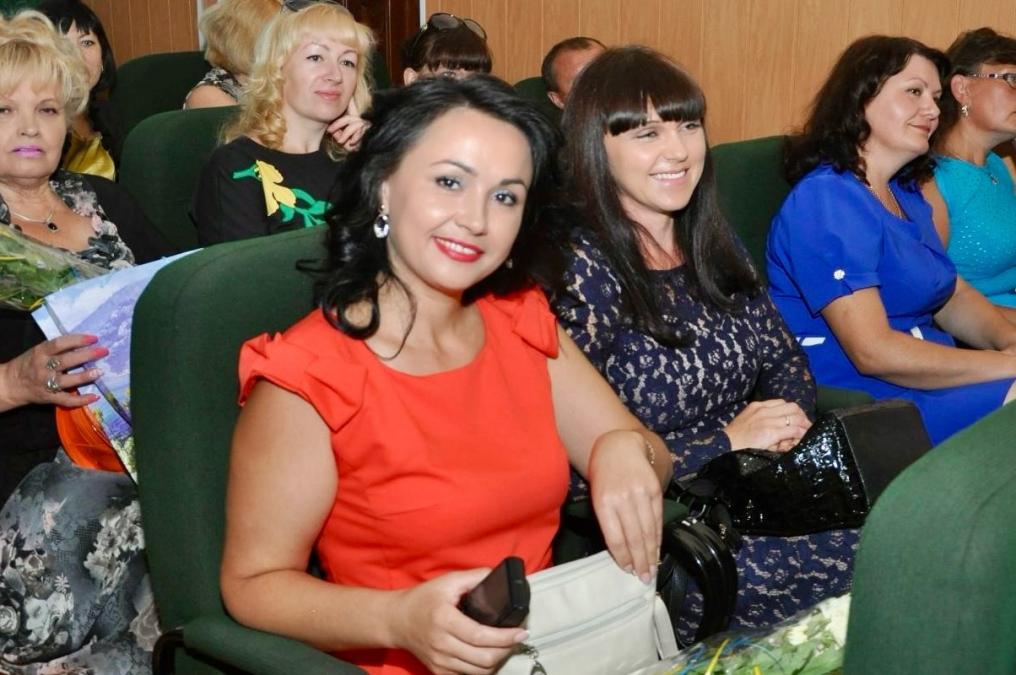There’s a touch of magic in every true educator — the ability to see talent in a child, potential in a colleague, and inspiration for growth in an ordinary day. Such is Tetiana Ivanivna Melnyk, a methodologist and preschool teacher at Kindergarten No. 6 “Kazka” (“Fairy Tale”) of the Sarny City Council.
Her life motto is simple yet profound: “Work on yourself and help others.” And she lives by it every day — from conducting methodological workshops and creative master classes to organizing charity initiatives that unite children, educators, and parents.
For Ms. Tetiana, teaching is not just a profession but a calling that grew from childhood dreams and a family tradition. She believes that the strength of a modern educator lies in love, teamwork, and continuous development.
In this interview, we spoke with Ms. Tetiana about how educational ideas are born, why it’s important not to fear change, and how to keep faith in kindness — even in the most difficult times.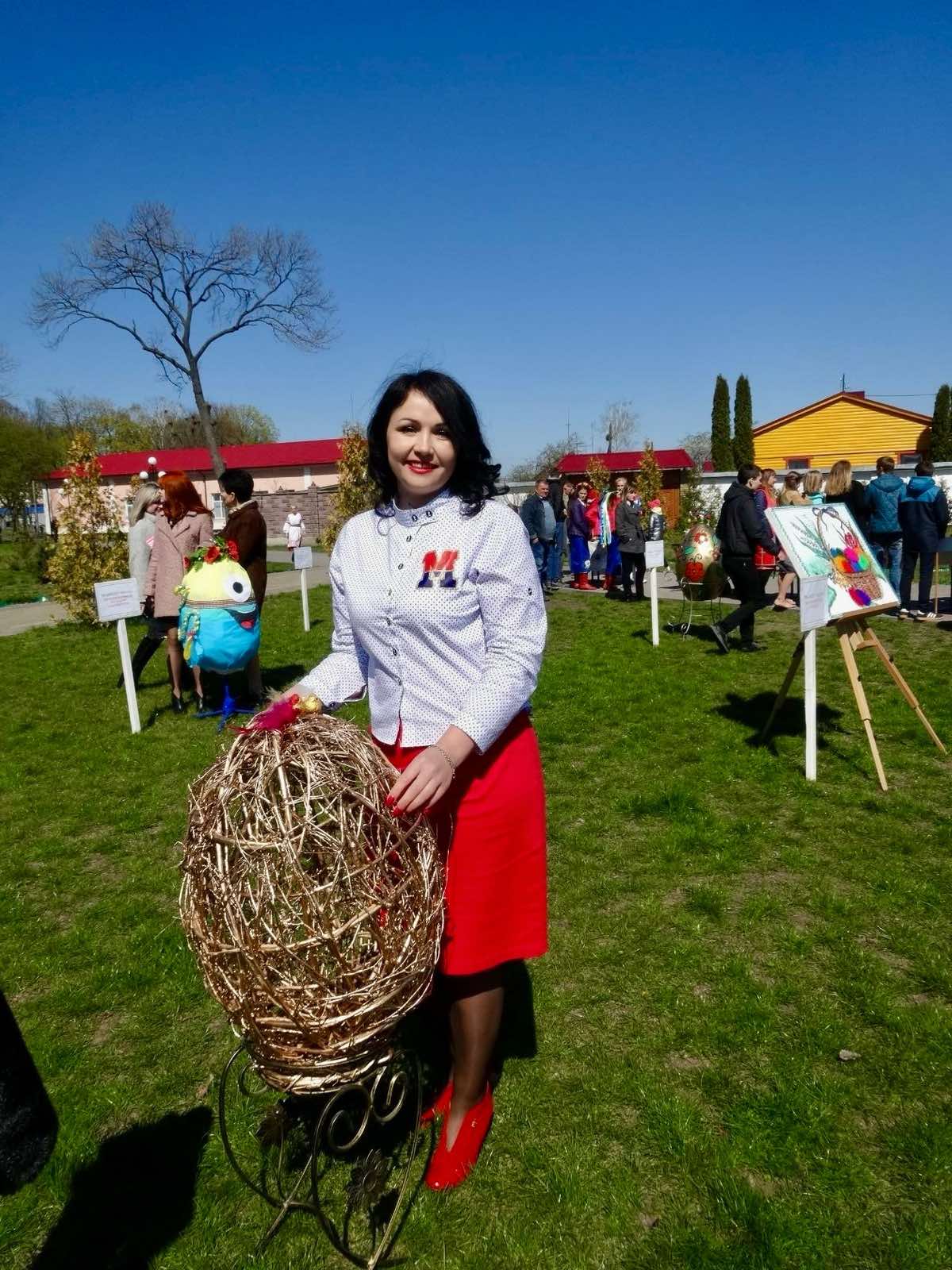
What inspired you to choose teaching as your profession?
Teaching, for me, is a calling. I have always loved to teach and to learn, to help others, and to see the results of my work. Back in school, I was inspired by my teacher, Halyna Vasylivna — caring, demanding, and sincere. It was thanks to her that I fell in love with learning, became an excellent student, and realized that I wanted to dedicate my life to education.
When did you first feel that you wanted to become a teacher?
Probably in childhood, when I used to look through my grandfather’s notebooks. His name was Yukhym Andriyovych Kozachenko, and he taught handicrafts. He built a workshop at school, planted an orchard, and people remembered his work long after he retired. The school principal used to say: “That’s Yukhym Andriyovych’s granddaughter — a wonderful legacy he left behind.”
I loved leafing through his journals and lesson plans, even marking student attendance just for fun. My mother often asked whether I wanted to choose another path, but I already knew then — I wanted to be a teacher, specifically an elementary school teacher. That’s how my destiny was shaped — to help others and continue my grandfather’s work.
How did you come to work in preschool education?
I live in the city of Sarny, and just near my house stands a very beautiful, picturesque kindergarten — “Kazka.” It’s truly special. When my son Nazar was little, we often passed by the kindergarten, admired the wall paintings, and watched the cat — the hero of children’s fairy tales. We even found that very book and read it together. Nazar loved going there and used to say, “Mom, let’s go to the Fairy Tale.”
Step by step, “Kazka” became part of our life. And when a teaching position opened up at the kindergarten, I decided to try. That’s how my teaching journey began.
For four years, I worked as a preschool teacher. During that time, I built my work philosophy around one principle: “Help others.” I tried to stay active, participate in district methodological associations, share my experience, and keep learning myself.
What were your first impressions when you started teaching?
The first thing — the children. There were many of them, and I needed to unite them into one friendly group. I wanted them to love their kindergarten, to come in the morning with smiles and excitement. I prepared carefully for every lesson: selected materials, searched for creative methods to make learning fun and engaging.
That same year, our kindergarten underwent accreditation, and I was invited to conduct an open lesson for the evaluators and local teachers. Our administrators — headmaster Larysa Vitaliivna and methodologist Valentyna Adamivna Korin — offered me a choice between speech development or literature. But I said, “No, I want to teach drawing — I have a rooster in my plan.”
I prepared thoroughly: developed a sample, planned every detail. There were over twenty children in the group — some calm, some very active — but everything went wonderfully. The lesson was a success, I received praise, and that became my first professional victory — the moment I realized I had chosen the right path.
Today, you work as a methodologist. How has your view of a teacher’s role changed?
When I was a teacher, my main goal was to prepare children for school — to organize engaging lessons, games, projects, and explorations so that children would come to kindergarten with love.
Now, as a methodologist, I have built a foundation of professional experience. Colleagues from across the community come to me for advice, teaching materials, and planning support. I help them develop annual work plans, define control methods, implement new projects and programs.
We actively integrate innovative technologies and creative approaches into the educational process. Over 16 years in this position, I’ve come to understand: children are love, teachers are care, and a methodologist is support, inspiration, and guidance.
How do you see the mission of a methodologist in a modern preschool?
The mission of a methodologist is to organize and coordinate the entire educational process. It involves methodological support, supervision of teaching and educational activities, program development, implementation of innovations, and continuous professional growth of educators—especially young specialists.
What are the main goals you set in working with your teaching staff?
First and foremost — ensuring high-quality education. It’s equally important to create a supportive and friendly atmosphere, engage teachers in joint projects, and continuously improve teaching and upbringing methods. After all, only teamwork brings real results.
Have you ever had methodological ideas that seemed too bold at first but turned out to be successful?
Yes, this year I had the wonderful opportunity to present my team’s experience at the affiliated (un)conference mini-EdCamp Sarny Preschool, held on May 3, 2025, under the theme “SEE Learning in the Modern World: Restore Your Resource.” It was an unforgettable event for educators from all over the Rivne region.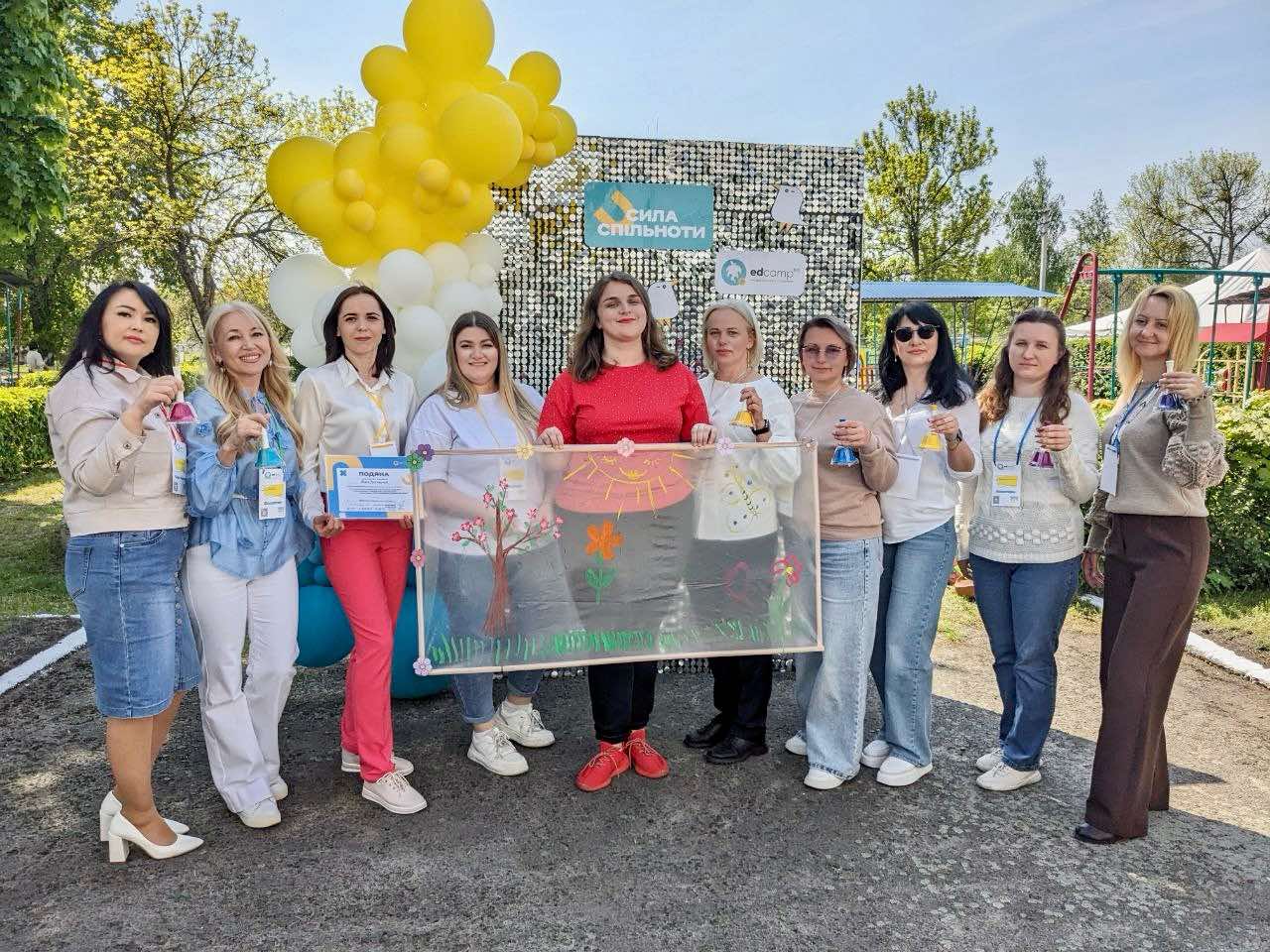
I led a workshop titled “Pedagogical Ideas Tender: A Recipe from the Master Chef.” Together with teachers from across the region, we shared our best “recipes” — creative ideas, engaging lesson formats, and interactive techniques. I presented everything in a “tasty” format: each participant brought their own “dish” — a method or idea — which we discussed and “tasted” together.
At first, the idea seemed too informal, even risky — not everyone views pedagogy through the lens of a kitchen metaphor. But in the end, the workshop was a great success: all participants received recognition, and the feedback was incredibly warm.
Did you implement these “delicious” ideas in your own preschool?
Of course! Before presenting the workshop at EdCamp, we held it in our own preschool. Our colleagues from the Sarny Center for Professional Development of Educators attended the event, gave excellent feedback, and supported our participation in the conference.
Interestingly, five years earlier I had already implemented a similar project for the heads of educational institutions in the Sarny community — also called “Recipe from the Master Chef.” It turned into a real celebration of creativity, where every teacher presented their best work and felt part of a united team. People still fondly remember that event and say: “Oh, Tetyana, well done!”
You often use culinary metaphors. Do you actually enjoy cooking?
Yes, I do! But even more, I love “cooking” educational ideas. When you present methodological approaches as signature dishes — hot, spicy, or sweet “desserts à la pedagogy” — your colleagues engage with enthusiasm. It creates warmth and creativity, as if we’re not at a meeting but in a cozy “pedagogical café,” where the most inspiring ideas for children’s development are born.
Which modern innovative technologies, in your opinion, have the greatest impact on preschool education?
In our preschool, teachers actively implement many innovative practices. Even before the COVID-19 pandemic, we conducted numerous district-level methodological sessions, where we explored and tested approaches such as:
Play stretching — a modern way to promote physical health;
Dienes blocks for logical and mathematical development;
Eidetica techniques for speech and cognitive development;
Integration of LEGO construction into the educational process;
The “Fairy Tale Game Labyrinths” by V. Voskobovych for cognitive growth;
Communication technologies in preschool management;
Mnemonics for memory and speech development;
The innovative “Smart Movement School” program.
We systematized this experience, created our own materials, and shared our practices. This helped us build a comprehensive system of child development that combines play, exploration, and creativity.
What modern tools do you use today?
As a methodologist, I organize scientific and practical meetings. One of them was a seminar titled “Socio-Emotional Learning and Play-Based Development in Preschool Children.” Its goal was to ensure continuous professional development and teach educators how to apply methods that nurture children’s emotional intelligence and communication skills.
Such sessions help teachers implement innovative techniques not only theoretically but also practically — through exercises, role-playing, interactive lessons, digital tools, and shared online platforms. I believe that modern preschool education is evolving through the combination of traditional pedagogical methods with digital tools, creative approaches, and socio-emotional learning.
If you imagine the ideal methodological office of the future, what must it include?
First of all — myself (smiles). Because the soul of any methodological office is the person who fills it with meaning. Thanks to the support of our city mayor, Svitlana Usyk, we completely renovated our office. Now it’s a modern, comfortable, and well-designed space that meets all the needs of pedagogical work. It includes a cozy area for seminars and workshops, cabinets for materials and teaching aids, a file system with teachers’ best practices, and a digital area with multimedia equipment and resources.
This office isn’t just a workplace — it’s a center of pedagogical inspiration. Here we hold meetings, training sessions, and interactive events — everything designed with taste and love.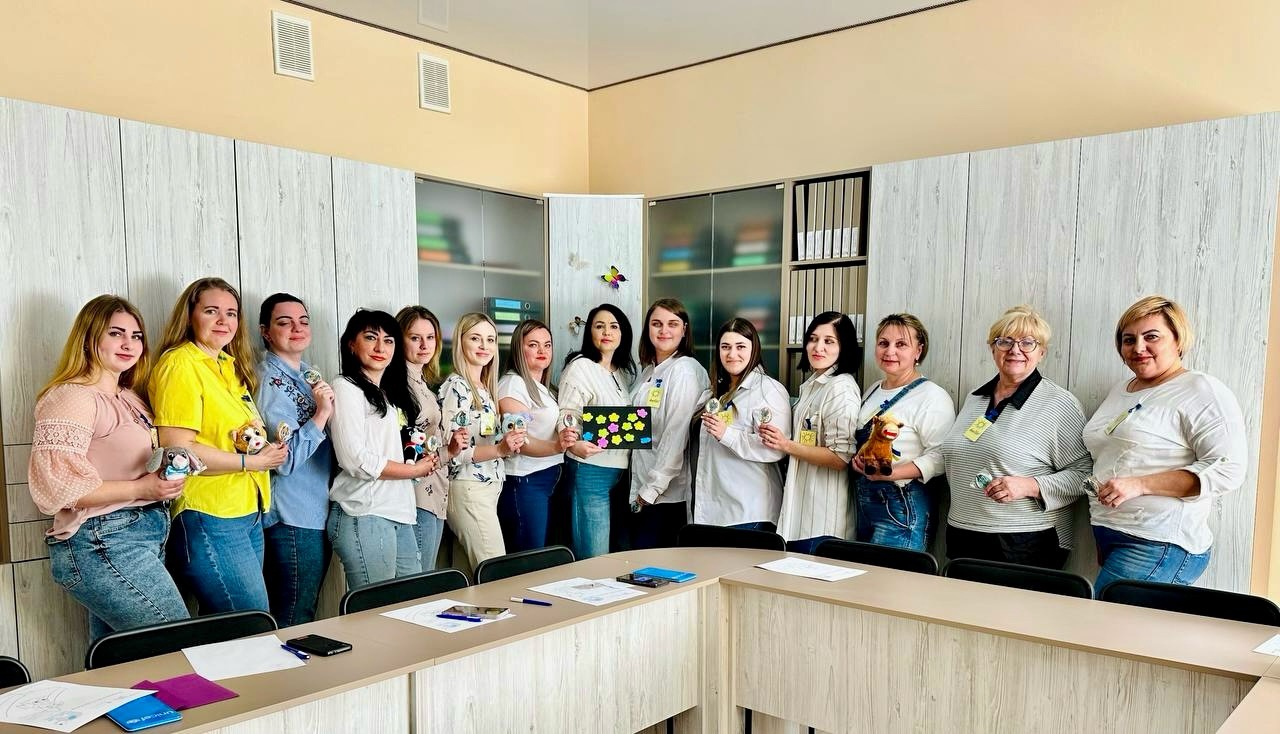
It seems your office is already the “methodological space of the future.” Would you agree?
Absolutely! I like to think so too. It’s a truly unique space — I don’t think there’s anything quite like it in our region’s preschools. This is my personal project, my little world. I designed everything myself — the colors, the layout, the cozy Provence-inspired style that feels both warm and bright.
My director trusted me to take the lead, and for the past five years I’ve been proudly curating this space. Colleagues often visit — even experts like Tetiana Volodymyrivna Naumchuk — and they always note how harmonious it feels: there’s room to sit, to talk, to create, to collaborate.
The atmosphere here is always warm, sincere, and deeply professional. Every month, we host seminars, interactive sessions, and creative meetups. We share experiences, learn from one another, and recharge with positive energy. It’s a place where you want to be — to think, to dream, to create.
You seem like a very active person, especially in your professional life. Could you tell us about some of the competitions or initiatives you and your team have taken part in?
Yes, we try to stay active and engaged — not only in education but also in community and charitable initiatives.
I often encourage our teachers to join national charity campaigns such as “Coins of Gratitude,” “The Warmth of the Heart in Every Coin,” “Happy Bark for Sirko” (a project supporting animal welfare), and “Underwater Adventures.”
Every year we also take part in the International Kindness Lesson, which helps nurture empathy and compassion in children. Together with the Happy Paw Foundation, we even helped set a national record of Ukraine!
Our teachers and children regularly participate in national competitions like “Alaba”, where our students often win first place — earning recognition from the mayor and the head of the education department, Diana Koshkina.
Another favorite is the Christmas contest “ELIIS Ukraine.” Each year we create themed photo zones and decorate our music hall — it brings so much joy to the children! We’ve already been honored twice for our participation.
We also joined the charity marathon “Socks for Victory 2.0,” receiving heartfelt souvenirs from activist Amina Polishchuk — a symbol of unity and shared kindness.
Last year, our team took part in the global movement “Giving Tuesday 2024.” We organized a children’s art contest, “Respect, Understand, and Be Grateful,” and held thematic discussions on kindness and gratitude. These projects have become part of our preschool’s growing tradition of doing good together.
For me, the goal is simple: I want teachers to feel proud of themselves — to see the impact of their work, to share their creativity, and to inspire others. We’re not just “participating” in contests — we’re building a culture of warmth, creativity, and mutual support.
You’ve also developed several of your own teaching materials. Could you tell us more about them? Have they been recognized in competitions?
Yes, I’ve been working on several projects over the years, especially focused on interactive collaboration with families, which has been my main area of research for over a decade.
I systematized years of experience into a complete methodological toolkit for teacher–parent interaction. I first presented it at the 12th regional “Fair of Pedagogical Ideas” in the Preschool Education category — and won first place.
That victory gave me the confidence to move to the next level — I presented my work at a regional contest of pedagogical creativity and received a diploma from the Rivne Regional Institute for Postgraduate Education for the project’s relevance, depth, and practical value.
Later, I developed a training manual titled “Enhancing the Professional Competence of Preschool Teachers through Interactive Technologies.” It took third place at the 13th regional creativity fair.
Another project — “Using Educational Technologies in Implementing the Alternative Program STREAM-Education: A Path into the Universe” — earned first place in the Technology category. This recognition reaffirmed my belief that interactive methods, family collaboration, and modern technologies are the real keys to developing 21st-century preschool education.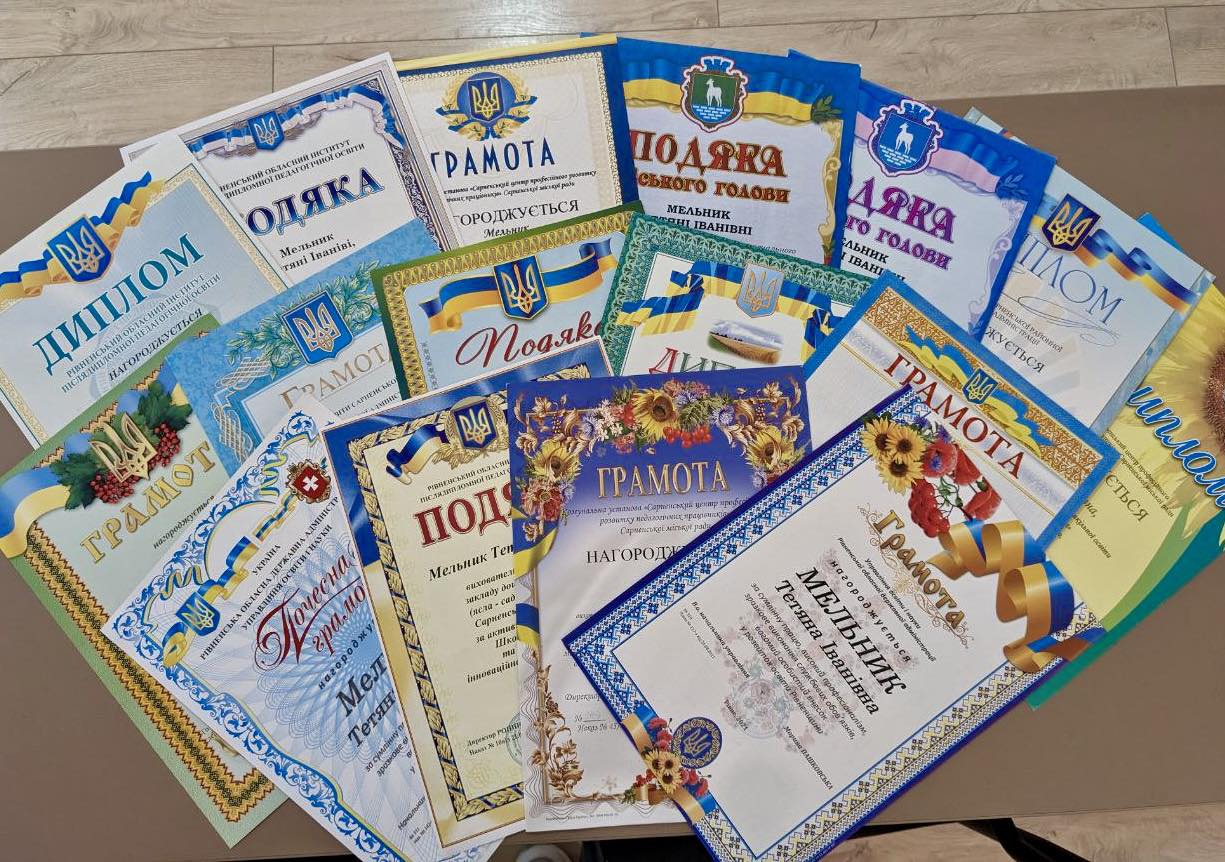
These achievements not only boosted my confidence but also opened new opportunities — sharing experiences nationwide, mentoring young educators, and contributing to professional development programs.
You’ve worked closely with both teachers and children. Can you recall a moment when a child taught you something important?
Oh yes — one story has stayed with me for years. It was summer, and I was temporarily managing a large preschool with over a hundred children. One afternoon, I felt tired and decided to sit in the park for a while. Suddenly, a group of our preschoolers spotted me — they ran over, smiling, carrying treats, and one little boy even offered me his lollipop. Their parents laughed, but I nearly teared up. Those children simply saw someone sitting alone — and wanted to share a little happiness. That moment reminded me: kindness isn’t about big gestures — it’s about warmth and empathy.
Since then, I’ve often said with a smile, “My life motto is: children, myself, and love.” And wherever I go — the store, the park, a local event — kids recognize me and shout, “That’s our teacher from preschool!” Each of those encounters feels like a tiny celebration for the soul.
How do you help parents recognize their child’s strengths?
We work closely with families through parent workshops, consultations, joint meetings, and support activities. When a child struggles to adapt, we — together with our psychologist, teachers, and administration — guide parents on how to respond correctly, help their child open up, and show love and acceptance every day.
The key is to see the best in a child — and say it out loud. Every child has their own strengths; we just need to create the right conditions for them to shine.
What common mistakes do parents make when raising preschoolers, and how can they avoid them?
I think the biggest mistake is not having enough time for genuine communication. I wish every family would read more fairy tales together, talk about their day, play, and go for walks.
A simple “How are you?” and a shared dinner can mean more than any gift. Children need attention and care — that’s how they grow up confident and kind.
What is the most valuable thing you hear from colleagues who come to you for advice?
My office is always open — I truly love helping others. Colleagues often bring me their competition materials or ask how to better present their ideas.
I tell them: “You create — and I’ll help make it beautiful.”
The greatest joy for me is seeing their success, their awards, their gratitude. That’s when I know our work truly matters.
You’re clearly a very energetic person, Ms. Tetiana. How do you maintain that energy and inspiration, especially in difficult times?
You know, I’m never afraid of anything. I always tell myself: If not me, then who? So I’m always on duty — both at work and in life. During the war, I had to be everything at once — support, organizer, and simply a person who didn’t give up. We helped displaced families and soldiers, and kept working even when everyone else stayed home.
I’ve never taken a sick leave — I’ve always stayed active and creative. When you feel responsible and believe your work matters, strength comes naturally. The war taught me the most important thing: don’t be afraid and don’t give up. I think that’s why people remember me as someone who keeps moving forward.
If you could change one thing in the preschool education system, what would it be?
I’d like to change people’s attitude toward teamwork. No one person should be seen as “more important” than others. If you have a team — everyone in it is equal. Each person has their role and should give their best during their time. Together we are strong — that’s how I see it.
In education — or in any field — success never comes from one person. It’s always the result of a team effort: the director, the methodologist, the teachers, the parents. When it all works like a chain of like-minded people, there’s nothing you need to change — because everything functions harmoniously.
You mentioned that you’ve never taken a sick day. How do you rest and recharge? Do you have any hobbies?
My work gives me genuine joy. I never think, “Oh no, work again.” Sometimes, I even want to open my notebook at home — to keep planning something exciting for the preschool.
I also love embroidery. I have many embroidered pictures and photographs.
Several times, I’ve been invited to exhibit my works at the City Day celebrations in Sarny. I created whole compositions — people admired them, took photos with me and their children next to the embroidery.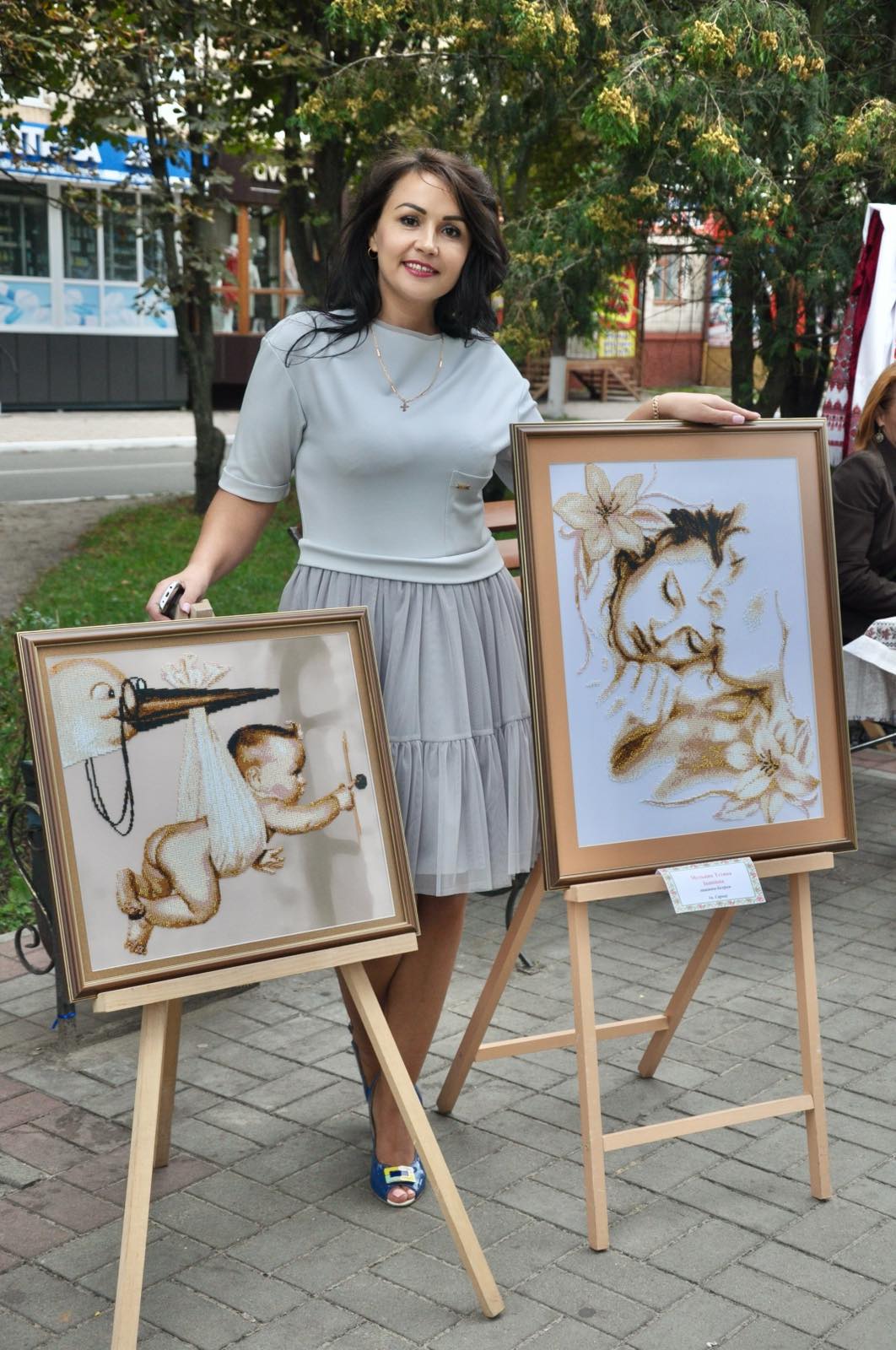
It’s something for the soul. Those works decorate my home and fill it with warmth — my own kind of therapy. And yes, I’ve even received certificates of appreciation for it.
Do you like to travel? Is there a country you’d love to visit?
Of course! We know how to work — but also how to rest. This year, I had the opportunity to travel abroad — to Nuremberg and Luxembourg — spending a month with my family and enjoying the beautiful landscapes of Germany. The war has made us more vulnerable, but it also taught us to cherish life and truly see the world.
Still, my greatest love is Ukraine. If peace returned, I’d devote myself even more fully to helping rebuild my country.
🎭 Behind the Profession
At the end of each interview, we ask our heroes a few personal questions — ones that reveal them in a new light: beyond their work, yet still with the heart of an educator.
What is your favorite children’s book, and why?
As a child, I loved Ukrainian folk tales — I read them myself and to my son.
They still develop children wonderfully, especially when used with mnemonic techniques.
As a professional, I draw inspiration from educational journals like Preschool Education, Methodologist-Educator, and Education Management.иI always take notes and share insights with colleagues. I’ve even received recognition from a digital publishing house for my commitment to professional growth and innovation.
What advice would you give to your younger self?
I’d say: Be more confident. Trust yourself, seek new knowledge, grow constantly.
And always live by your calendar — don’t postpone things.
Keep up with time — with the day, the hour.
What might surprise our readers about you?
I don’t think much could surprise them anymore (smiles). I’ve been everywhere — at the Rivne Institute of Postgraduate Education, at the Pedagogical College giving workshops, in schools as an authorized ZNO examiner. I’ve always strived to help — children, students, colleagues. I live by one rule: help others, and everything will fall into place.
My son also followed that path — he graduated from Kyiv National University of Trade and Economics and became a marketing specialist. My life principle is simple: If something needs to be done — do it today. Because life is movement, without barriers.

